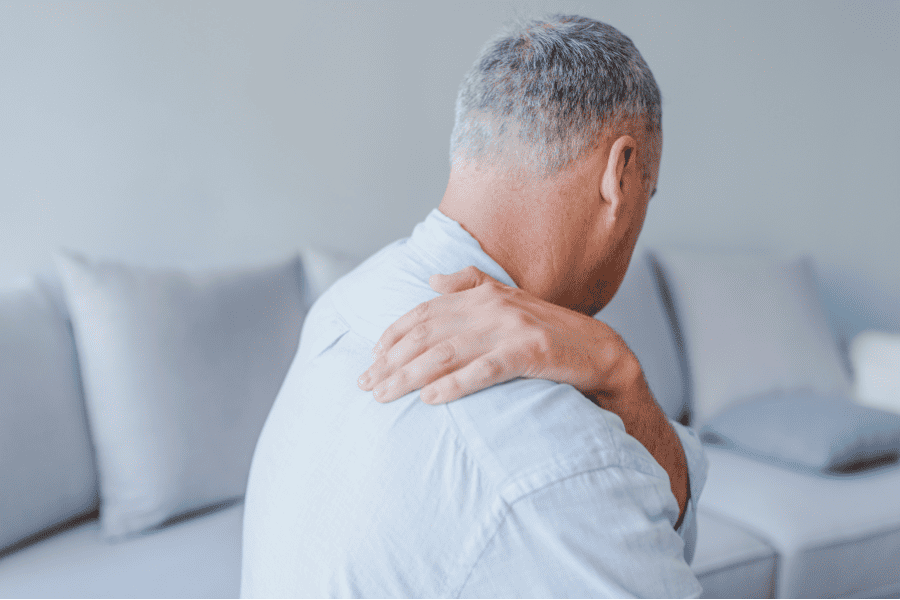Patient Story: Norma Robles Back to Doing What She Loves After Shoulder Arthroscopy with William W. Baldwin, M.D.
- What is a Shoulder Arthroscopy?
- Why would I need a Shoulder Arthroscopy?
- When should I consider Shoulder Arthroscopy?
- What happens during Shoulder Arthroscopy?
- Recovery timeline from Shoulder Arthroscopy
When shoulder pain begins to impact your quality of life and keeps you from doing the things that matter most, it might be time to consider a minimally invasive shoulder arthroscopy. Shoulder arthroscopy offers diagnostic and therapeutic benefits for various shoulder conditions. Utilizing small incisions and specialized instruments, William W. Baldwin, M.D., a board-certified orthopaedic surgeon at Orlando Orthopaedic Center specializing in sports medicine, knee, and shoulder surgery can visualize, diagnose, and treat shoulder problems effectively.
For Norma Robles, a patient of Dr. Baldwin, a right shoulder arthroscopy was just what she needed to get her back to full mobility.
What is a Shoulder Arthroscopy?
William W. Baldwin, M.D.
Sports Medicine, Knee & Shoulder Surgery
Shoulder arthroscopy uses small incisions and specialized instruments to examine and address issues within the shoulder joint. By inserting an arthroscope through the small incisions, Dr. Baldwin can visualize the joint on a monitor, making it a very minimally invasive approach. This procedure offers advantages such as shorter recovery times, reduced scarring, and less postoperative pain than traditional open surgery.
“I feel amazing. Thanks to my procedure with Dr. Baldwin, I have a full range of motion in my right arm with no pain. My quality of life has improved significantly”, says Norma.
Why would I need a Shoulder Arthroscopy?
Shoulder arthroscopy may be recommended for various shoulder conditions, including rotator cuff tears, shoulder impingement, bicep tendon injuries, shoulder instability, and labral tears. It is a preferred treatment when conservative approaches like rest, physical therapy, or medications have not provided relief or improvement.
When should I consider Shoulder Arthroscopy?
The decision to undergo the procedure is based on individual factors such as diagnosis, symptom severity, and the impact on daily activities and quality of life. Surgery is typically only considered after trying non-surgical measures to treat pain or dysfunction.
For Norma, determining if shoulder arthroscopy was right for her meant talking with Dr. Baldwin to determine her best course of action. “My first interaction with Dr. Baldwin and his team was wonderful. Everyone was so kind and attentive. Every step was explained to me. Every question I had was answered,” says Norma.
What happens during Shoulder Arthroscopy?
During shoulder arthroscopy, you will receive anesthesia for comfort throughout the procedure. In addition to anesthesia, modern nerve blocks make the surgery and recovery process very comfortable. Small incisions will be made around the shoulder to insert the arthroscope and specialized instruments. The arthroscope transmits images to a monitor, allowing Dr. Baldwin to visualize and assess the structures within the shoulder joint. Then, he will address the specific issue, which may involve repairing damaged tendons or ligaments, removing loose fragments or bone spurs, or performing other necessary procedures. After surgery, the incisions will be closed, and you will be moved to a recovery area.
Recovery Timeline from Shoulder Arthroscopy
 The recovery period after shoulder arthroscopy varies based on the condition, procedure complexity, and individual factors. Typically, it involves several phases:
The recovery period after shoulder arthroscopy varies based on the condition, procedure complexity, and individual factors. Typically, it involves several phases:
- Immediate postoperative period: After the procedure, you will spend a short time in recovery. Once cleared, you will likely go home on the same day.
- Initial healing phase: In the first few days, you may experience mild to moderate discomfort, swelling, and bruising around the shoulder joint. Pain medication and ice packs can help manage these symptoms. Follow post-operative instructions for incision care.
- Rehabilitation and physical therapy: Physical therapy is necessary for recovery. Dr. Baldwin will recommend a personalized rehabilitation program to improve your range of motion, strengthen your shoulder muscles, and restore function. Physical therapy usually begins a few days to a week after the procedure and continues for several weeks or months.
- Return to activities: The timeline for resuming normal activities varies based on the procedure extent and healing progress. Light activities may be resumed within a few weeks, while more intensive activities or sports may require a longer recovery period, ranging from several weeks to several months.
By following Dr. Baldwin’s guidance, attending physical therapy, and adhering to the prescribed recovery plan, you should be able to optimize your recovery and regain full functionality in your shoulder.
“Since my surgery, I can now do my daily tasks again. I returned to my self-care and workout routines without constant severe pain. For anyone who’s on the fence about seeing Dr. Baldwin, I would tell them, don’t hesitate. He’s the best. The entire process was so smooth. I feel amazing. I highly recommend him and the procedure. I feel so great.”
Take the first step towards improved shoulder health and quality of life. If you’re experiencing persistent shoulder pain or have been diagnosed with a shoulder condition, schedule an appointment at Orlando Orthopaedic Center to explore the potential benefits of shoulder arthroscopy.



